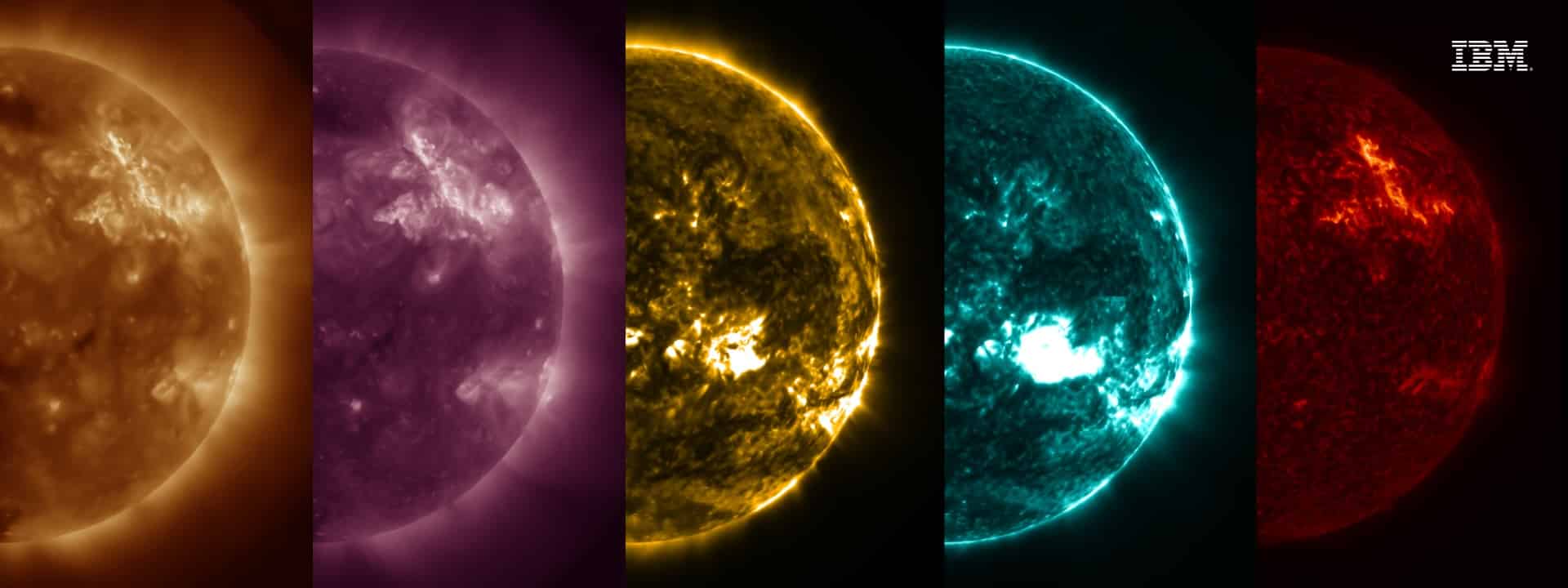The future of space forecasting no longer relies solely on traditional telescopes and physical models. IBM and NASA have introduced Surya, the first foundational AI model for heliophysics, trained on high-resolution solar observation data and released on Hugging Face as open source.
This technological breakthrough promises to transform how we understand and predict solar weather, a phenomenon that can disrupt everything from power grids and telecommunications to GPS systems and space navigation satellites.
A model designed for the AI era
Surya was trained with nine years of data from NASA’s Solar Dynamics Observatory (SDO), using a dataset ten times larger than those typically employed in conventional AI projects. The challenge was not only the size of the dataset but also the need for custom multiscale architectures capable of processing massive information without losing efficiency.
The result is a model that offers:
- A 16% improvement in accuracy in classifying solar eruptions compared to traditional methods.
- The unprecedented ability to visually predict solar eruptions up to two hours in advance.
- Scalability and flexibility for integration into scientific and operational forecasting systems worldwide.
“We’re integrating NASA’s scientific expertise with IBM’s AI power,” explained Kevin Murphy, Director of Scientific Data at NASA. “Surya enables us to understand the Sun’s behavior with speed and precision never seen before.”
A global technological challenge
Modern society’s dependence on critical infrastructure — energy, transportation, communication satellites — makes the impact of a solar storm potentially devastating. According to Lloyd’s, an extreme event could cause losses of $2.4 trillion over five years and result in everything from massive blackouts to flight diversions and satellite damage.
Surya addresses this challenge by combining foundational AI, high-resolution scientific data, and open access, exemplifying how AI can safeguard the technologies relied upon by billions of people.
Technological democracy: from labs to Hugging Face
IBM and NASA have chosen to publish the model on Hugging Face, one of the largest open-source AI platforms. This move democratizes access to the tool, enabling researchers, telecom companies, network operators, and universities to adapt Surya for their own use cases.
Potential applications include:
- Telecommunications: predicting failures in satellite communication systems.
- Aerospace: planning routes to minimize solar radiation exposure.
- Space exploration: enhancing astronaut safety during lunar or Martian missions.
- Agriculture and logistics: protecting supply chains dependent on GPS systems.
Surya as part of a family of scientific models
The new model is not created in isolation. It is part of the Prithvi family of foundational models developed by IBM and NASA. This collection already includes climate and geospatial models aimed at accelerating research in critical areas.
“Surya is not just a technological milestone but a vital step toward AI as a driver of scientific discovery,” stated Juan Bernabé-Moreno, Director of IBM Research Europe.
Integration challenges and next steps
While the model represents a significant leap forward, there are still several hurdles to overcome:
- Real-time validation to enable integration into global early warning systems.
- Standardization and international protocols are essential for adoption by governments and utility operators.
- Interoperability with critical infrastructure — from space agencies to energy utilities.
Conclusion: AI to safeguard our digital civilization
The launch of Surya serves as a reminder that AI is transforming not just medicine and commerce, but also space exploration and the protection of critical infrastructure.
In a highly interconnected world where a solar storm can disrupt everything from communication satellites to national electrical grids, having an open, scalable, and accurate tool like Surya is more than a scientific advancement — it’s a strategic component of global technological resilience.
FAQs
What is Surya?
A foundational AI model trained on high-resolution solar data, designed to predict space weather and anticipate solar eruptions.
Why is predicting solar weather important?
Because solar storms can damage satellites, cause blackouts, disrupt flights, and threaten astronaut safety.
Where is Surya available?
On the open-source platform Hugging Face, accessible to researchers, companies, and governments.
How does Surya differ from previous methods?
Its ability to visually predict eruptions in advance and achieve a 16% accuracy improvement over existing models.
via: AI News

